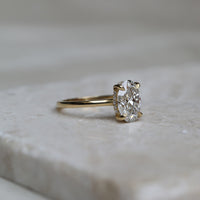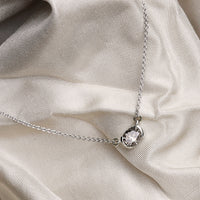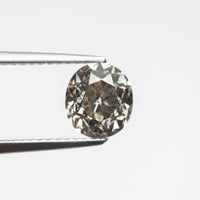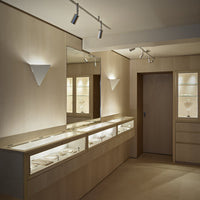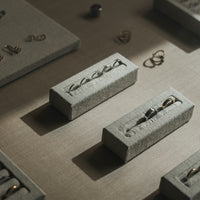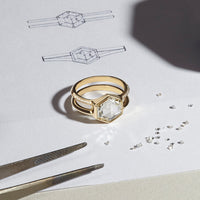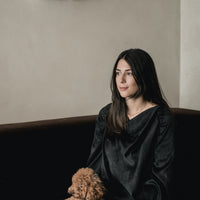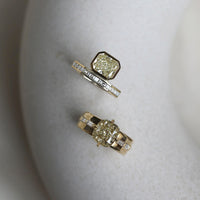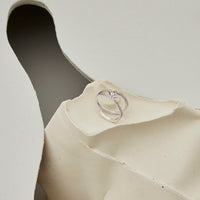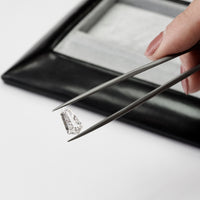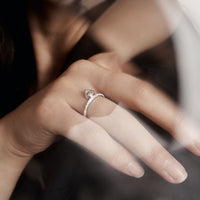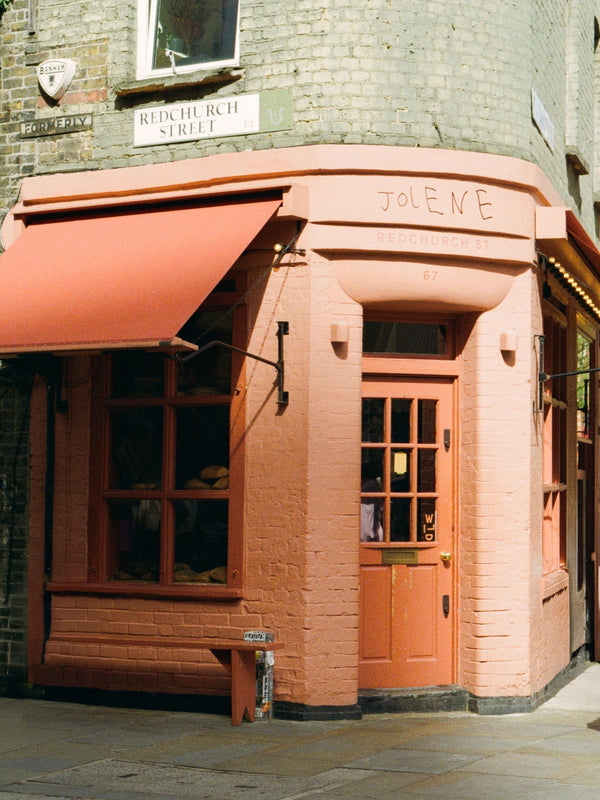

It's an electrically sunny day in Bolton, Greater Manchester, and the light entering Bec Kirby's quaint studio only seems to further accentuate the slow magic that takes place behind its closed doors.
Bec is the talented force behind soosumsee, the textile studio interweaving a love of gentle, time-intensive making and deep-rooted heritage techniques into every fibre of its work. She sits down with us to discuss the undervalued language of textiles, the peaks and troughs of a self-taught practice and life as a creative up North.

Hi, Bec! How is your week going?
Hello! Good, thank you. I’m juggling a couple of exciting projects at the moment, so it’s all go, go, go in the studio — but in the best way.
before you entered the textile space, was there anything that you felt it was missing?
No, not at all. Textiles have always been a powerful language — a way for people, especially women, to communicate, record, and remember. I’ve always felt really inspired by that history and the work that came before mine. So I didn’t feel that something was missing, but more like I had something to contribute.
My work has a particular sensitivity to fibre, exploring the boundaries of its limits, testing what it can endure through processes of repetition, and I think I’ve found my own voice within that.

People may not know this, but you're self-taught in your practice. How would you say this has influenced your path to the career you have today?
I think it’s let me approach things with a bit of naivety, which has — in a sense — been a good thing. Without a set structure or rules to follow, I’ve been able to explore quite openly.
My background is in interior design, so I was already used to researching and developing ideas conceptually, and there are definitely crossovers in how I think and work today.
Being self-taught has helped and hindered me in different ways. I’ve had to figure a lot out on my own, without really knowing how things are ‘meant’ to be done. But that process is what I enjoy the most, discovering things for myself rather than following a fixed curriculum. It’s been slower, but it feels more ‘me’.


Weave (2025) & Angry Men with Hernias and a Dog (2024)
you work predominantly with natural, surplus materials. is this important to you?
It’s a big part of how I work and think. There’s already so much waste and overproduction, and I’m conscious of adding to that. I try to work mostly with natural and surplus materials, not solely from a sustainability aspect, but because they carry their own history, and I love blending that history in with what will one day be my own. There’s a lot of care in choosing to work with what’s already here.
That said, I’m not completely rigid. Sometimes I come across a material that excites me, and I’ll make space for it, as long as it can be recycled and won’t end up adding to the problem. I avoid anything synthetic or plastic-based.
I think for me, it’s about being thoughtful. It doesn’t have to be perfect, but I do think we all have a responsibility to stay conscious of what’s happening around us. I think it’s important to make with care, and to think about the impact our choices have on other people, animals, and the planet.

by extension of these materials, it seems you lean quite heavily into neutrals. what role does colour play in your work?
I love colour, but I use it sparingly. As you say, the natural materials I work with lead my practice toward a predominantly neutral palette, but when colour does appear, it’s always intentional and carries a specific role within the narrative of that particular piece.

would you say there are any recurrent themes in your practice?
I’d say there are two recurrent themes that run consistently through my practice.
Textiles have historically been mis-positioned within art, often undervalued or confined to craft. Much of my work comes from a place of challenging these boundaries and attempting to reframe them.
Repetition is also fundamental to my process, both as a method and as a meditation. The repeated gestures of sewing hundreds of stitches and spending hours brushing out fibres shape the work in many ways. These actions take a lot of time and focus, which become as integral to the piece as the materials themselves.
What is your relationship like with jewellery? Do you have any pieces that you hold close to your heart?
My relationship with jewellery is sentimental. I’m pretty low maintenance and only wear two rings, both made by my boyfriend about ten years ago.
He used to work as a dental technician, and it turns out the process of making crowns is pretty similar to making jewellery. The only difference is that these rings are made out of metal intended for teeth rather than silver, which makes them kind of weird, but also really special.
Bec wears the Chamfered Round ID Necklace


Bec wears the Oval Signet Ring and Flat Band - 1.5mm
How would you describe the creative scene up north?
It’s amazing. There is so much crossover and collaboration, and because the circle is small, everyone knows each other and gets involved in everything. It feels really connected and supportive. There are so many people doing really cool stuff, and I feel really lucky to be a part of it.

Is there a favourite spot of yours that you think deserves more recognition?
MØ6B! run by Andrew Lyster, founder of the music label YOUTH, it is hands down the best spot if you’re looking for a nice cocktail and good music. Lyster always has something up his sleeve, often collaborating with local food spots, serving up BBQs and the likes on the best terrace in the NW. You’ll find me there most weekends.

looking for more?
Follow Bec on Instagram @soosumsee and online soosumsee.com
